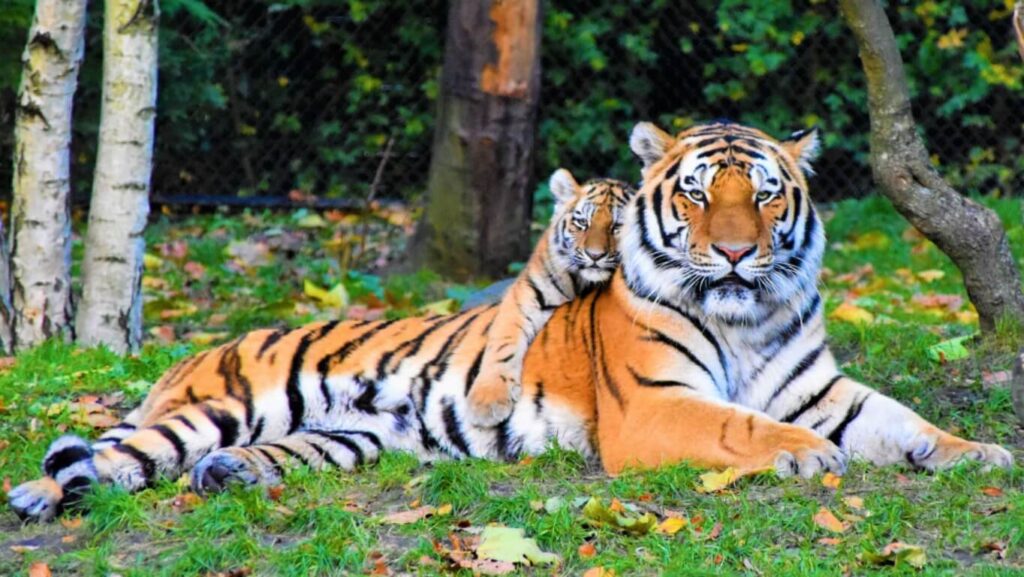Tigers encapsulate the wilderness along with the welfare of our ecosystem. A healthy tiger population is pertinent for the ecosystem as well as maintaining the flora and fauna. They are also highly regarded for their certain scientific, economic, aesthetic, and cultural values. Global Tiger Day or International Tiger Day was started in the year 2010 at the Saint Petersburg Tiger Summit. This was initiated with the vision to stimulate a system that will serve globally for the protection as well as the development of the natural habitats of tigers. Resolutions and promises were made to raise awareness about the conservation of this beautiful species and make it their agenda to double the tiger population by 2022. The slogan for this year’s Global Tiger Day is, “Their survival is in our hands.”
Persistent efforts to protect this species has been going on since 1973, with the launch of Project Tiger. India was at the forefront of tiger conservation in the International forum. This enabled the number of tiger reserves to increase and focus on a few specific states too. But according to The Tiger Estimation Report of 2018, their population has been increasing rampantly due to varied reasons. Climate change, Poaching, as well as depletion of the forest areas serve as significant reasons. The World Wildlife Fund has shown considerable remorse as the tiger numbers keep decreasing since the beginning of the 20th century.
Most people lack clarity about the fact that tigers need to be saved not only because of their ethereal beauty, without realizing the massive importance they are bestowed with. They are considered to be the indicator of a stable eco-system, because of their presence at the zenith of the food chain. Tigers heavily depend on herbivores, who in turn depend on the vegetation around the area.
While on one hand, states like Madhya Pradesh, Karnataka, Mizoram can boast of an increase in their tiger population, on the other hand, Odisha seems to be in a despondent state. Their population has been static for the last four or more years, even with the availability of lush green forests throughout. Pertinacious poaching can be blamed for this sorry state of affairs. Odisha’s tiger population has been reduced by 104 from 132 in 2002 to 28 in 2018. Even though crores of rupees have been allocated for tiger protection, nothing seems to be working for this majestic animal. The Simplipal Tiger Reserve has lost a significant number of tigers as per the census figures of the State Government. The tigers have been suffering fatalities due to foolish human cruelty. Ceratin organs of the tigers along with their hides, skins, and whiskers have been in great demand in the International market. A slackening of the strict rules, as well as dishonest forest officials who help poachers in abetting this crime, could be one of the major causes of this dwindling species. Mayurbhanj is home to a lot of tribals who had this age-old practice “Akhanda Shikaar” which involved hunting down wild animals for lucrative prizes. Through the years, this has seemed to gradually decline by effective measures, But the rising population and construction of their homes have also deemed to be a problem for the lack of forest available to the tigers.
Certain questions have augmented regarding the newborn cubs and the tiger census techniques used. The focus was tried to be shifted from Simplipal to Satkosia and Sunabeda Tiger reserves but the conditions didn’t seem to be optimum for the tiger population to grow.
Odisha is no more appraised as the haven for tigers. The vast forest expanse and the excellent ability of the tigers to breed quickly has not helped in escalating the population of this species. Researchers and experts believe that the striped beauty can become extinct if proper measures are not taken as soon as possible. The big cats are extremely beneficial to the area that they survive in by maintaining ecological integrity somehow; thereby being called the ‘umbrella species’. It will take a lot of strict measures and implementation so that they are not just constricted to the traditional ‘bagha nacha’.
Photo by Waldemar Brandt from Pexels

